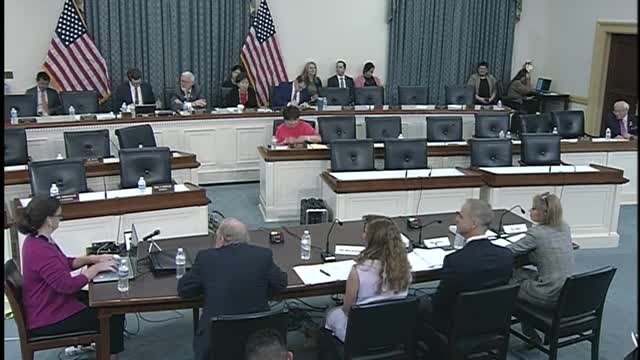Price controls threaten broadband access in rural America
September 12, 2024 | Energy and Commerce: House Committee, Standing Committees - House & Senate, Congressional Hearings Compilation
This article was created by AI summarizing key points discussed. AI makes mistakes, so for full details and context, please refer to the video of the full meeting. Please report any errors so we can fix them. Report an error »

In a recent government meeting, discussions centered on the implications of price controls on broadband services, particularly in rural areas. Representative from East Tennessee raised concerns about how price caps could adversely affect broadband access for rural communities, emphasizing that while price controls may seem beneficial, they could deter providers from entering the market.
Bloomfield, an expert in the field, highlighted the importance of allowing states to determine their own pricing based on data analysis. She warned that rigid price mandates, such as New York's $15 cap, could hinder service availability. Furthermore, she pointed out that the potential elimination of the universal service program could lead to skyrocketing costs for rural consumers, estimating rates could reach approximately $163 per month, making broadband unaffordable for many.
The meeting also featured a discussion on innovative technologies for delivering high-quality internet in low-density areas. A representative from Tarana explained how their technology utilizes spectrum to provide reliable internet service even in challenging environments, such as mountainous regions. This approach could enhance service delivery in rural areas, making taxpayer investment in such technologies worthwhile.
Additionally, the meeting addressed the National Telecommunications and Information Administration's (NTIA) approval process for state broadband plans. Concerns were raised about the NTIA's insistence on including specific pricing for low-cost broadband options, which some states, including Florida, have resisted. The implications of these requirements could delay broadband deployment, particularly in states like Montana, where the timeline for fiber installation could extend to 2029 if approvals are not expedited.
Overall, the discussions underscored the delicate balance between regulating broadband prices and ensuring service availability, particularly for underserved rural populations. The need for clarity in regulatory guidance and the potential impact of delays on broadband infrastructure development were also significant points of concern among participants.
Bloomfield, an expert in the field, highlighted the importance of allowing states to determine their own pricing based on data analysis. She warned that rigid price mandates, such as New York's $15 cap, could hinder service availability. Furthermore, she pointed out that the potential elimination of the universal service program could lead to skyrocketing costs for rural consumers, estimating rates could reach approximately $163 per month, making broadband unaffordable for many.
The meeting also featured a discussion on innovative technologies for delivering high-quality internet in low-density areas. A representative from Tarana explained how their technology utilizes spectrum to provide reliable internet service even in challenging environments, such as mountainous regions. This approach could enhance service delivery in rural areas, making taxpayer investment in such technologies worthwhile.
Additionally, the meeting addressed the National Telecommunications and Information Administration's (NTIA) approval process for state broadband plans. Concerns were raised about the NTIA's insistence on including specific pricing for low-cost broadband options, which some states, including Florida, have resisted. The implications of these requirements could delay broadband deployment, particularly in states like Montana, where the timeline for fiber installation could extend to 2029 if approvals are not expedited.
Overall, the discussions underscored the delicate balance between regulating broadband prices and ensuring service availability, particularly for underserved rural populations. The need for clarity in regulatory guidance and the potential impact of delays on broadband infrastructure development were also significant points of concern among participants.
View full meeting
This article is based on a recent meeting—watch the full video and explore the complete transcript for deeper insights into the discussion.
View full meeting